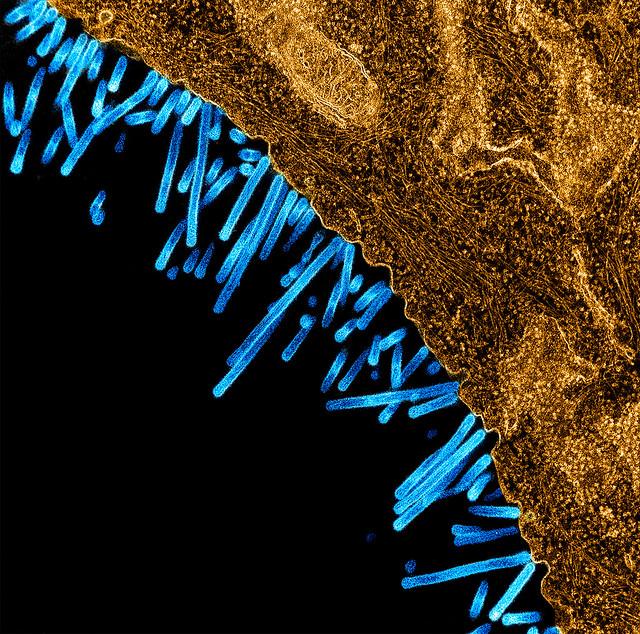Discovery by NIAID-funded researchers could aid quest for universal flu vaccine

Credit: NIAID
WHAT:
The ever-changing “head” of an influenza virus protein has an unexpected Achilles heel, report scientists funded by the National Institute of Allergy and Infectious Diseases (NIAID), one of the National Institutes of Health. The team discovered and characterized the structure of a naturally occurring human antibody that recognizes and disrupts a portion of the hemagglutinin (HA) protein that the virus uses to enter and infect cells. The investigators determined that the antibody, FluA-20, binds tightly to an area on the globular head of the HA protein that is only very briefly accessible to antibody attack. The site was not expected to be vulnerable to such a strike.
James E. Crowe, Jr., M.D., of Vanderbilt University Medical Center, Nashville, Tennessee, and Ian A. Wilson, D. Phil., of The Scripps Research Institute, San Diego, California, led the team. They isolated FluA-20 antibody from a person who had received many influenza immunizations. In a series of experiments, they showed that FluA-20 can “reach into” an otherwise inaccessible part of the three-part HA trimer molecule and cause it to fall apart, thus preventing the spread of virus from cell to cell. This discovery came as a surprise because this region of trimeric HA was thought to be stable and inaccessible to antibodies. Moreover, this region–unlike the rest of HA’s head–varies little from strain to strain. In theory, antibody-based therapeutics directed at that precise region would be effective against many strains of influenza A virus. Similarly, vaccines designed to elicit antibodies against this target might provide long-lasting protection against any influenza strain, potentially eliminating the need for annual seasonal influenza vaccination.
In mouse studies, FluA-20 prevented infection or illness when the animals were exposed to four different influenza A viral subtypes that cause disease in humans. Two viruses used in the experiments, H1N1 and H5N1, are Group 1 influenza subtypes, while the two others, H3N2 and H7N9, are members of Group 2. Current influenza vaccines must contain viral components from both subtypes to elicit matching antibodies. A single vaccine able to generate potent antibodies against members of both groups could provide broad multi-year protection against influenza.
###
ARTICLE:
S Bangaru et al. A site of vulnerability on the influenza virus hemagglutinin head domain trimer interface. Cell DOI: 10.1016/j.cell.2019.04.011 (2019).
WHO:
NIAID Director Anthony S. Fauci, M.D., is available to discuss this research.
CONTACT:
To schedule interviews, please contact Anne A. Oplinger, (301) 402-1663, [email protected].
This research was funded, in part, by NIH grants U19 AI117905, R56 AI127371 and P01 AI097092 from NIAID, P41 GM103393 from the National Institute of General Medical Sciences and UL1 TR002243 from the National Center for Advancing Translational Sciences, as well as by NIH contracts HHSN272201400024C, HHSN272201400008C and HHSN27220170041I.
NIAID conducts and supports research–at NIH, throughout the United States, and worldwide–to study the causes of infectious and immune-mediated diseases, and to develop better means of preventing, diagnosing and treating these illnesses. News releases, fact sheets and other NIAID-related materials are available on the NIAID website.
About the National Institutes of Health (NIH): NIH, the nation’s medical research agency, includes 27 Institutes and Centers and is a component of the U.S. Department of Health and Human Services. NIH is the primary federal agency conducting and supporting basic, clinical, and translational medical research, and is investigating the causes, treatments, and cures for both common and rare diseases. For more information about NIH and its programs, visit http://www.
Media Contact
Anne A. Oplinger
[email protected]
Related Journal Article
http://dx.




